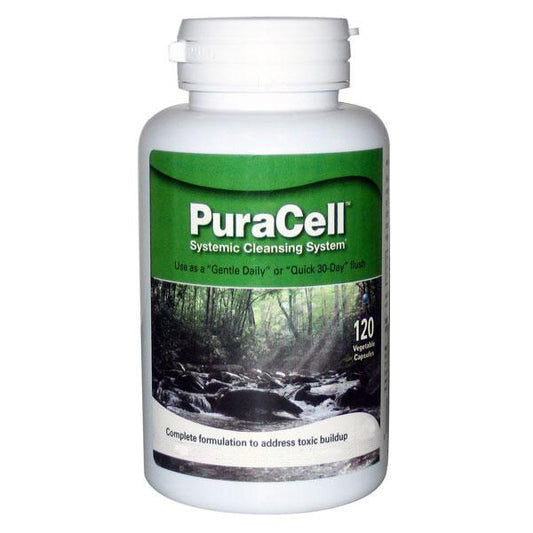The pH level of an environment can significantly impact enzyme activity, a fact that holds profound implications for both scientific research and industrial processes. Whether you're a student, educator, researcher, or professional in the healthcare or environmental sectors, understanding this relationship is key to mastering enzyme kinetics and optimizing their use. To help you effectively apply this knowledge, we explore how pH variations affect enzyme behavior in this comprehensive guide.
What Is pH?
pH is a measure of the hydrogen ion concentration in a solution, indicating its acidity or alkalinity. The pH scale ranges from 0 to 14, with a pH of 7 being neutral, values below 7 indicating acidity, and values above 7 indicating alkalinity. This logarithmic scale means that each whole number change represents a tenfold change in hydrogen ion concentration. For example, a solution with a pH of 4 is ten times more acidic than one with a pH of 5. Understanding pH is essential in various scientific fields, as it influences chemical reactions, biological processes, and environmental conditions.
Why Does pH Matter In Affect Enzyme?
pH matters in affecting enzyme activity because it directly influences the enzyme's structure, stability, and catalytic efficiency. Changes in pH can affect the three-dimensional shapes of enzymes, which are proteins that are essential to their proper function. The ionization states of amino acids in the enzyme's active site can shift with pH variations, affecting substrate binding and the overall reaction rate. Extreme pH levels and temperature fluctuations can lead to the denaturation of enzymes such as those produced by the pancreas, rendering them inactive. Therefore, maintaining an optimal pH is crucial for preserving enzyme activity, ensuring efficient biochemical reactions, and achieving desired outcomes in both biological systems and industrial applications. Identifying the optimum pH and enzyme concentration can significantly enhance the performance of these enzymes.
How Does pH Affect Enzyme Activity?
Optimal pH Range
Each enzyme has an optimal pH range within which it exhibits peak activity. This optimal pH is determined by the enzyme's structure and the environment in which it typically functions. Deviations from this optimal range can lead to reduced enzyme activity or complete denaturation. For instance, pepsin, a digestive enzyme in the stomach, works best in highly acidic conditions (pH 1.5-2) where its active site is adapted to the optimum pH, while trypsin, another digestive enzyme, functions optimally in the more neutral environment of the small intestine (pH 7.5-8.5). Understanding the optimal pH range is crucial for maximizing enzyme efficiency in both biological and industrial processes.
Effect on Enzyme Structure
pH levels can significantly impact the three-dimensional structure of enzymes, which is critical for their catalytic activity. Enzymes are proteins that rely on their specific shapes to bind substrates and catalyze reactions. Changes in pH can alter the ionization states of amino acids in the enzyme's active site, leading to conformational changes that affect substrate binding and catalysis. Extreme pH levels can cause denaturation, where the enzyme loses its structure and, consequently, its functionality. Maintaining the appropriate pH is essential to preserve the structural integrity and activity of enzymes.
Influence on Reaction Rate
The rate of enzyme-catalyzed reactions is highly dependent on pH. For instance, lipase showcases its maximum catalytic efficiency at its optimal pH, resulting in the highest reaction rates. Deviations from this optimal pH can lead to a decrease in reaction rate due to altered enzyme structure and reduced substrate binding affinity. For example, in industrial applications such as fermentation, maintaining the correct pH is vital to ensure high yields and efficient production. Monitoring and adjusting pH levels can help optimize reaction rates and improve overall process efficiency.
Impact on Enzyme Stability
Another important factor that pH affects is enzyme stability. Enzymes are most stable within their optimal pH range, where they maintain their structural integrity and functionality over time. Outside this range, enzymes can become unstable, leading to a loss of activity and shorter shelf life. This is particularly important in industrial and pharmaceutical applications, where enzyme stability directly affects product quality and cost-effectiveness. By controlling pH levels, it is possible to enhance enzyme stability and extend their usability in various processes.
Practical Applications
Understanding how pH affects enzyme activity, including that of amylase, has practical applications across multiple fields. In medicine, it helps in designing effective drugs and treatments by targeting specific enzymes under optimal pH conditions. In environmental science, it aids in assessing the impact of pH changes on ecosystems and developing strategies for pollution control. In industrial biotechnology, optimizing pH levels can improve the efficiency of processes such as fermentation, waste treatment, and biofuel production. By leveraging knowledge of pH effects, scientists and professionals can enhance the performance and sustainability of their respective fields.

At What pH Do Enzymes Work Best?
Enzymes work best at their specific optimal pH, which varies depending on the enzyme and its natural environment. This optimal pH is the point at which the enzyme's structure is most stable and its active site is most effective at binding substrates and catalyzing reactions. For example, the enzyme pepsin, which aids in protein digestion in the stomach, has an optimal pH of around 1.5 to 2, reflecting the highly acidic conditions of the stomach. Conversely, enzymes like amylase, which breaks down starches in the mouth and small intestine, function optimally at a more neutral pH of around 6.7 to 7.0. Understanding the optimal pH for specific enzymes is crucial for maximizing their efficiency in both biological processes and industrial applications.
Can Extreme pH Levels Denature Enzymes?
Yes, extreme pH levels can denature enzymes, rendering them inactive. Enzymes are proteins with complex three-dimensional structures that are essential for their catalytic function. When exposed to highly acidic or highly alkaline conditions, the hydrogen bonds and ionic interactions that maintain the enzyme's structure can be disrupted. This leads to a loss of the enzyme's specific shape, particularly in the active site where substrate binding occurs. Denaturation alters the enzyme's functionality, preventing it from catalyzing reactions effectively. Therefore, maintaining an appropriate pH range is critical to preserving enzyme activity and ensuring efficient biochemical processes.
Conclusion
Understanding how pH affects enzyme activity is essential for a wide range of scientific and industrial applications. Enzymes have specific optimal pH ranges where they function most efficiently, and deviations from these ranges can lead to reduced activity or denaturation. The relationship between pH and enzyme activity influences everything from biological processes in the human body to industrial manufacturing and environmental health. By comprehending and controlling pH levels, scientists, educators, healthcare professionals, and industry experts can optimize enzyme performance, enhance research outcomes, and improve practical applications. This knowledge not only deepens our understanding of biochemical processes but also drives innovation and efficiency across various fields.
Final Thoughts
Unlock the benefits of Vitalzym Extra Strength, the ultimate systemic enzyme supplement from World Nutrition. This vegetarian formula is expertly crafted to elevate your body's enzyme levels, bolster immune function, speed up recovery, and enhance circulation. Packed with potent ingredients such as serrapeptase, bromelain, and papain, Vitalzym paves the way for a vibrant and healthy life. Experience the comprehensive advantages of World Nutrition products and begin your journey to wellness today.*
Sources
- https://www.britannica.com/science/pH
- https://openoregon.pressbooks.pub/mhccbiology112/chapter/changes-in-enzyme-activity
- https://www.sciencedirect.com/topics/agricultural-and-biological-sciences/enzyme-stability
These statements have not been evaluated by the food and drug administration (FDA). These products are not intended to diagnose, treat, cure, or prevent any disease.







